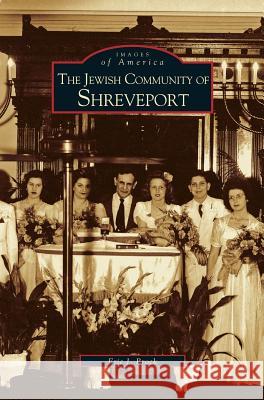Jewish Community of Shreveport » książka
Jewish Community of Shreveport
ISBN-13: 9781531610104 / Angielski / Twarda / 2003 / 130 str.
The Jewish presence in northwest Louisiana actually predates the establishment of Shreveport in 1836. From the very beginning, Jews have been part of the city's civic, social, and mercantile life. Pioneer settlers began holding services in private homes in the 1840s, and by 1858 the community was sufficiently large enough to consecrate a Jewish cemetery and the first Jewish benevolent association, a forerunner of today's North Louisiana Jewish Federation. In 1859, the first congregation was founded.In The Jewish Community of Shreveport the rich history of this influential and vibrant citizenry is chronicled by well-known Louisiana historian Eric J. Brock, archivist of Shreveport's B'nai Zion Temple. Nearly 18 decades of Jewish life in Shreveport are depicted in over 200 vintage images, many of which are previously unpublished. Both of the city's synagogues, B'nai Zion and Agudath Achim, are represented, as are many of the rabbis, business leaders, political leaders (including three mayors), and laypeople from the community's long history.
The Jewish presence in northwest Louisiana actually predates the establishment of Shreveport in 1836. From the very beginning, Jews have been part of the citys civic, social, and mercantile life. Pioneer settlers began holding services in private homes in the 1840s, and by 1858 the community was sufficiently large enough to consecrate a Jewish cemetery and the first Jewish benevolent association, a forerunner of todays North Louisiana Jewish Federation. In 1859, the first congregation was founded.
In The Jewish Community of Shreveport the rich history of this influential and vibrant citizenry is chronicled by well-known Louisiana historian Eric J. Brock, archivist of Shreveports Bnai Zion Temple. Nearly 18 decades of Jewish life in Shreveport are depicted in over 200 vintage images, many of which are previously unpublished. Both of the citys synagogues, Bnai Zion and Agudath Achim, are represented, as are many of the rabbis, business leaders, political leaders (including three mayors), and laypeople from the communitys long history.











